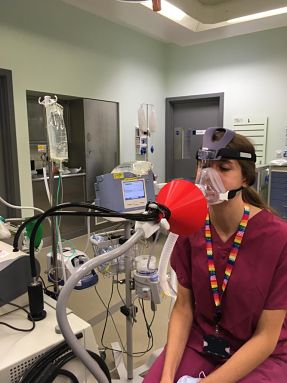At present central policies around these procedures mean the use of full PPE and often lengthy waits between procedures to allow for cleaning and adequate room airflow changes to occur. This has led to increasing waiting times and the cancellation of some NHS services across the UK. The AERATOR group are studying procedures in ophthalmology, dentistry, respiratory medicine, orthopaedics and anesthetics. The study has received urgent public health (UPH) badging, which has really benefited the delivery of the study. Chief investigator Nick Maskell, Professor of Respiratory Medicine at University of Bristol said; ‘It is amazing that just 6 months after accepting this award, we are able to share our first set of results on respiratory support. This is a great collaborative effort between experts at the the Bristol Aerosol Research Centre (BARC) and a range of specialists at North Bristol NHS Trust.’
Professor Jonathan Reid, Director of the Bristol Aerosol Research Centre (BARC) said "Aerosols and droplets are the primary vehicle for transmitting the coronavirus. Measuring how much aerosol is generated by clinical procedures, compared to breathing and coughing, is a crucial first step to identify which processes could pose a risk of infection to clinicians and patients."
The AERATOR study team looked at whether oxygen delivery systems used routinely on medical wards and intensive care units do generate aerosol. Joint first authors, Florence Gregson and Gus Hamilton said “Using state of the art sampling techniques, and a laminar flow theatre to reduce background aerosol, we measured the amount of aerosol generated when breathing, talking and coughing whilst wearing a surgical mask, CPAP mask or HFNO.’ They studied this in both healthy subjects and also COVID-19 patients.
Dr James Dodd, Senior Lecturer in Respiratory medicine, who was senior author on the respiratory arm of the study said “This study has shown that the use of CPAP actually reduces aerosol transmission rather than increases it. Coughing generated 10 times the amount of aerosol compared to breathing alone. These results have significant implications for PPE usage on medical wards and will allow us to protect our patients and staff better”.
These results have been presented at the NIHR task and finishing group which feeds into the AGP subgroup of SAGE. The AERATOR team hope these results will assist in updating central policies on the use of PPE in hospital settings.
